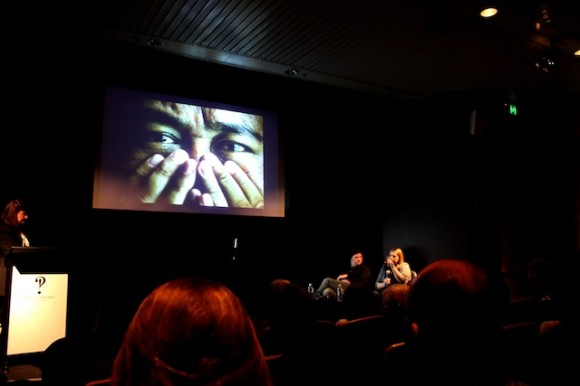How to be a photojournalist in a conflict zone? Renowned Australian photographers Kate Geragthy and Stephen Dupont answered this question at the New South Wales State Library on July 23.
Introduced by award-winning Sydney Morning Herald journalist Kate McClymont, the talk revealed that being a photojournalist involves a lot more than taking pictures.
Both these photographers have worked in some very tough environments.
Geragthy’s first overseas assignment was to cover the 2002 Bali bombings. While there, she worked every day taking pictures but felt compelled to be more than a witness so put down her camera and helped people.
That was a difficult time, she said, but she was delighted when she went back a decade later to find that a young waitress she photographed who had been badly burned at the club still had the scar on her arm but held a baby in the other. “Life turned out pretty well for her,” Geragthy said.
Not all were so lucky: sadly, many people she photographed throughout her career were later killed.
Geraghty also worked in Afghanistan, Iraq and Lebanon, and was even jailed in Israel after the 2010 flotilla that tried to end the blockade on Gaza.
She said there is no handbook in these countries.“You have to be organised, prepared and most of all you have to trust the fixers; you put your life in their hands.”
She regards the job as a massive responsibility and admits that she became obsessed with what she saw, reading everything about the conflict in the news. Post-traumatic stress exists even for photographers but it depends on the individual, she said.
Stephen Dupont has also travelled to the world’s most dangerous locations, starting at age 22 with the Sri Lanka war.
He said that for him it is a great honour to document such important historic events.
He also shared his experience that as a photographer you can forget the reality of what you are seeing because you are looking at it through the camera lens. In Rwanda, a colleague warned him to back up, as he had not realised how close he was to the bullets. “You get lost in the moment sometimes,” he said.
In those dramatic situations, Dupont said he reminds himself that he is not the victim. “It’s nothing what I have to go through compared to the people there. I’m not suffering; they are,” he said.
He always asks himself how far he can go and is ready to put the camera down to help when needed.
Both these extraordinary photographers agree that the best way to get a good story is to rely on the blessing of the people. “They have respect for you documenting,” said Dupont. “You’re not only taking pictures, you’re also giving pictures.”
To view Stephen Dupont’s and Kate Geraghty’s work visit their websites.




